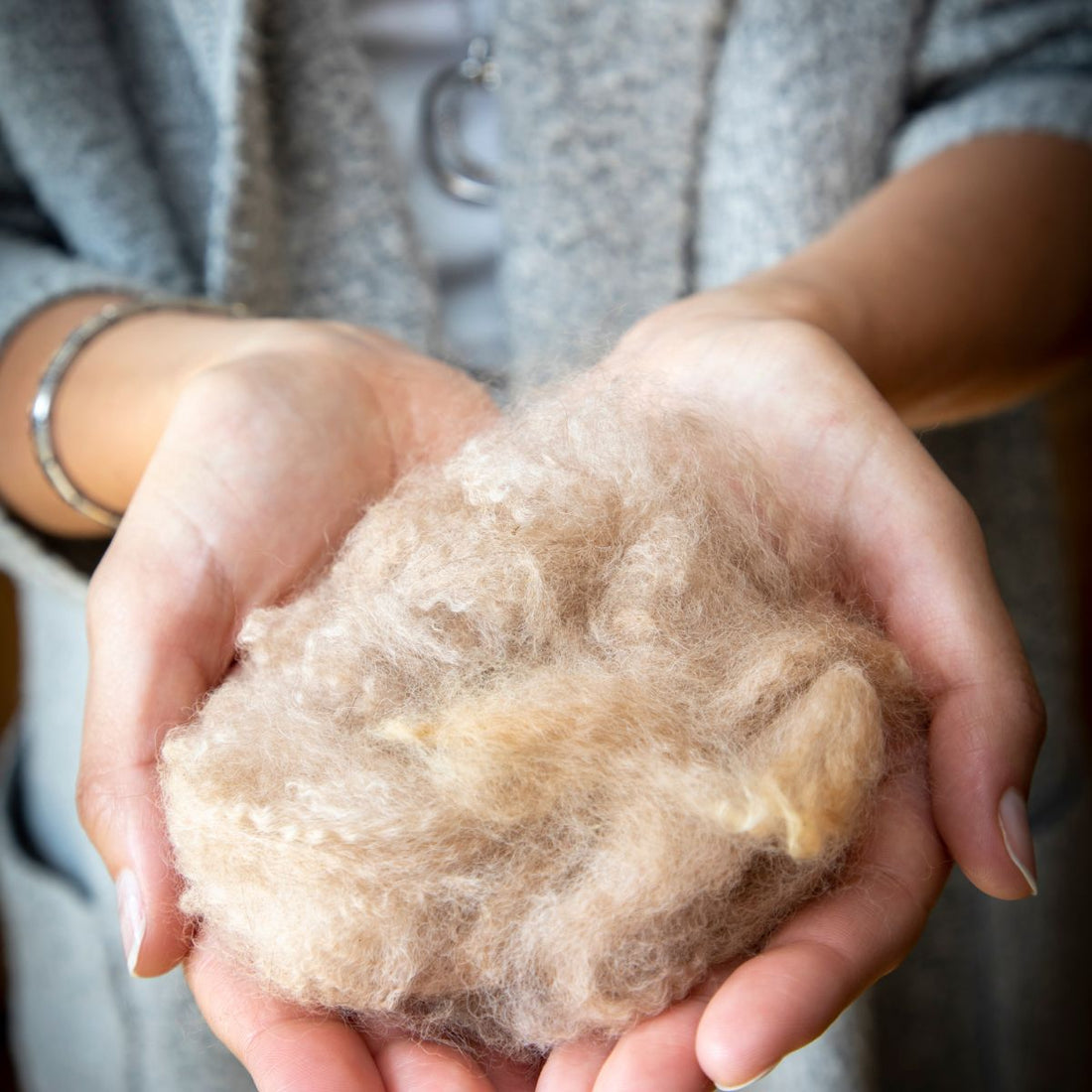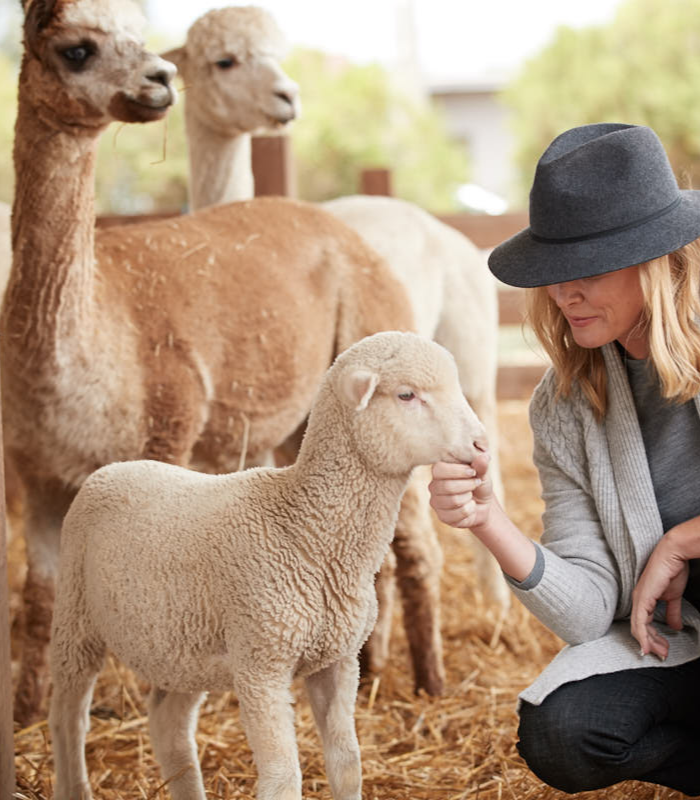Wool is one of the most enduring, adaptable, and luxurious fibers in the textile industry, valued for its warmth, softness, and resilience. To preserve its quality and increase its longevity, adequate maintenance is necessary. It can be intimidating to fully understand all aspects of wool care but worry not! You can make sure that your wool clothing and blankets stay in perfect shape for many years to come by using the appropriate information and practices.
Knowing the Wool Care Secrets
These days, we set out on an exploration of the details of wool maintenance, gaining knowledge from the professionals at Creswick Wool, who are well-known for their commitment to producing high-quality wool goods. To discover the keys to maintaining the integrity and beauty of wool, let's explore the contents of their thorough care instructions.
What is wool?
Understanding the nature of wool is essential before diving into care guidelines. Wool is a naturally occurring fiber that is obtained from the fleece of sheep or other animals, such as goats and alpacas. Its peculiar structure is made up of small scales that, if not treated properly, can collect smells and filth. Wool is also a popular material for a variety of clothing items and homewares because of its natural flexibility and moisture-wicking qualities.
How do you care for wool?
In order to keep wool in its perfect state, Creswick Wool stresses the value of sensitive treatment. Important points consist of:
- The majority of wool goods should be hand washed in order to avoid shrinkage and damage from heat and agitation.
- Warm water (around 30°C/86°F) should be used to avoid too much felting or shrinking.
- Choose gentle detergents that are safe for wool in order to protect the fibers' natural oils.
- Drying: To keep shape and avoid stretching, air dry flat. Wool clothing can lose its shape, so don't hang or wring it out.
Addressing Wool Odour in Wool Products:
Tips for Proper Ventilation and Care
Often a strong wool odour will linger with a wool product due to the change in climate storage or if it has been left in a damp place. This can often happen in transit to a customer when shipping goods. Once the goods are aired and completely ventilated or Dry Cleaned this smell will usually be completely gone. We would recommend to air the blanket when they arrive if there is a smell.As you wash the blanket, this will increase the wool smell that happens when the wool is cold or damp. When a wool blanket is washed, it often feels touch dry and is brought in and folded up or used directly on the bed.
The fibres retain water in the core and do take some time to dry out. It is best to hang the blanket out for 2 days in a dry place to let it thoroughly ventilate and air dry before using.
You will find doing this will rid you of the natural odour and your beautiful natural woollen blanket is ready to use again.
How do you care for wool?
In order to keep wool in its perfect state, Creswick Wool stresses the value of sensitive treatment. Important points consist of:
- The majority of wool goods should be hand washed in order to avoid shrinkage and damage from heat and agitation.
- Warm water (around 30°C/86°F) should be used to avoid too much felting or shrinking.
- Choose gentle detergents that are safe for wool in order to protect the fibers' natural oils.
- Drying: To keep shape and avoid stretching, air dry flat. Wool clothing can lose its shape, so don't hang or wring it out.
For various wool products, such as apparel, blankets, and homewares, Creswick Wool offers customized advice. For longevity and optimal performance, various maintenance techniques may be needed for various items, ranging from knitted sweaters to opulent blankets.
How to remove stains?
Accidents do occur, but do not panic! Wool stains like wine, coffee, and grease can be removed from wool by following these tips from Creswick Wool. To stop stains from setting in permanently, prompt action combined with gentle treatment is necessary. Dab gently with an absorbent, lint-free cloth to remove as much excess liquid as possible.
Sponge the area sparingly with a mixture of warm water and surgical spirit (£1.25 for 100ml, Amazon) or rubbing alcohol in equal parts.
How to store your wool?
When wool products are stored properly, they stay protected when not in use. Clean, dry wool clothing should be kept out of direct sunlight and possible moth damage by being stored in a ventilated fabric bag or container, according to Creswick Wool.
Can I get my wool professionally cleaned?
Professional cleaning could be the best choice for wool goods that are delicate or have stubborn stains. Creswick Wool suggests enlisting the help of professional dry cleaners who are accustomed to working with wool clothing and fabrics.
How to take are of Pilling and Fluffing wool?
The balls/pilling you are experiencing on your Fine Merino Wool blanket are quite common with wool products and natural fibers in general, but the good news is that you can get rid of them, and they will stop over time. To address this, we recommend shaking or beating out the wool and airing the blanket outside on a warm, dry day to shake out loose fibers. Next, lay the blanket flat and gently brush off the excess with a wool comb or soft brush, though this can be messy, it is effective. You can then use a clothing or lint brush, or wrap tape around your hand sticky side outwards, to remove the last bits. Sometimes, repeating this process may be necessary, especially for darker colors that show fibers more prominently.
The world of wool care can be tricky, but with the information from Creswick Wool's thorough care guidelines, you can handle your wool goods with confidence. Recall that prompt maintenance, appropriate storage, and gentle handling are crucial. By adhering to these recommendations, you'll prolong the life and sustainability of your wool items while also protecting their aesthetic appeal and purity. In order to ensure that your woolen treasures continue to provide warmth and joy for future generations, embrace the art of wool maintenance.







